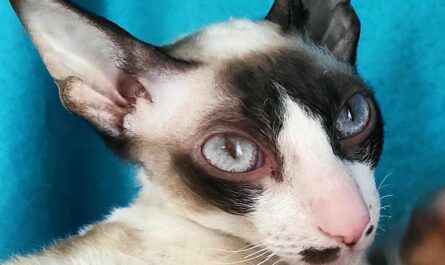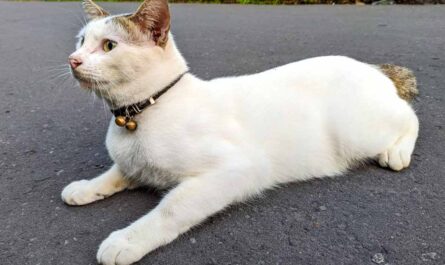Abyssinian is a popular, exquisite cat breed of its kind. Prepare to engage in spirited conversations with your Aby; their melodious “trill” is far more soothing than a piercing yowl. Abyssinians, undoubtedly ‘people cats,’ thrive on companionship and would not relish extended periods of solitude. Lynda further emphasizes the importance of keeping Abyssinians in pairs or with other pets, especially when owners are away at work. Plentiful toys and a tall scratching post or climbing frame will also provide them with much-needed entertainment.
Now, let’s explore the great outdoors. Abyssinians, known for their intelligence and independence, relish exercise and long outdoor sojourns. To ensure their safety and showcase their stunning physical attributes, an enclosed, escape-proof garden is the ideal haven, as recommended by Carole.
Abyssinian Cat Breed Profile
The captivating Abyssinian cats first ventured into Europe through Ethiopia. Historically, Ethiopia was recognized as Abyssinia, a piece of history embedded in the breed’s nomenclature. Abyssinians exhibit a level of curiosity that surpasses the ordinary feline. While most cat breeds are inherently inquisitive during their kittenhood and early years, Abyssinians retain this sense of wonder throughout their entire lives. If an Abyssinian cat graces your life, be prepared to provide ample entertainment, for failure to do so might lead to the development of undesirable habits. See why thousands of cats love BoxCat
While all cats possess intelligence, Abyssinian cats take it to the next level! These feline prodigies are remarkably trainable, eagerly seeking to please their human companions. With an inherent athleticism, they relish learning tricks, especially when rewarded with delectable treats. If you’ve harbored dreams of playing fetch with a cat, an Aby might help fulfill that aspiration.
Unraveling the Abyssinian Cat Breed’s History
While Abyssinians might seem like a product of ancient Egypt, drawing comparisons to cats from that era and the Roman import of Egyptian cats to England, their true origins remain shrouded in mystery. Some speculate that Abyssinians may descend from African Wild Cats. If you’re captivated by the allure of Egyptian cats, don’t miss our Egyptian Mau cat breed profile.
Though the sleek visage of the Abyssinian cat might conjure images of Cleopatra’s Nile Valley, this captivating breed boasts a distinctly British heritage. In 1860, Lord Robert Napier embarked on a journey to Abyssinia, the former Ethiopian Empire, and returned to England with a solitary feline companion named Zulu. The locals were captivated by Zulu’s distinctive coat pattern, reminiscent of a rabbit native to the region. Zulu’s alluring traits, particularly the captivating coat pattern, became sought-after characteristics in subsequent generations of cats. This marked the inception of the Abyssinian breed’s journey across Europe. However, the cataclysm of World War II loomed on the horizon.
Like numerous other cat and dog breeds, the Abyssinian nearly faced extinction during the tumultuous era of World War II. Fortunately, the Abyssinian had already established a foothold in the safe havens of America and Canada by then. Remarkably, the early popularity of the breed played a pivotal role in safeguarding it from the brink of annihilation. Official records of Abyssinians in Britain date back to 1882. Among the early pioneers was Zula, who journeyed from Abyssinia (now Somalia) in the 1860s under the care of Army Officer Captain Barrett-Leonard.
Despite the enigma surrounding their lineage, Abyssinians have graced the United Kingdom for well over a century. They found their place in history with the first Standard of Points documented by Harrison Weir in 1889, as well as Frances Simpson’s ‘The Book of the Cat,’ published in 1903. This legacy establishes the Abyssinian as one of the earliest pedigree cat breeds.
Exploring the Appearance of Abyssinian Cats
Abyssinians boast a captivating array of colors, including the most common ‘sorrel,’ as well as blue, chocolate, lilac, fawn, and silver. All these shades extend to the silver variety. Carole elaborates, “For most, the Usual Aby, with its wild resemblance to a miniature puma or lynx, defines the breed, exuding remarkable charisma. However, this is just one of many colors now available.”
The Abyssinian cat is a medium-sized feline with a foreign type, characterized by a slender, muscular physique. Their distinctive ticked coat displays four bands of color. Their almond-shaped eyes, expressive and captivating, can be amber, green, or hazel. Their soft, fine coats are closely fitted, accentuating their allure. Cat accessories on Amazon
If the Abyssinian’s allure has captivated you, you may also find the Somali cat breed of interest.
Abyssinian Cat Breed’s Personality & Temperament
Abyssinian cats are celebrated for their intelligence, playfulness, and inquisitiveness. Their melodious and bird-like trilling sets them apart in vocal communication. These feline savants are extraordinarily clever, savor fetch and retrieve games, and relish participating in any activity you undertake. They excel as companion cats, showering affection upon their human family members, and relishing their role as integral members of the household.
Abyssinian cats, brimming with vitality, are a joy to care for, making them an ideal choice for novice cat owners. These spirited felines seldom rest, often immersing themselves in spirited solo play sessions with their cherished toys. Yet, like a whirlwind shifting direction, their attention effortlessly turns to people and fellow furry companions, eagerly engaging in interactive play.
Coats
Draped in rich, exotic coats of gold and cinnamon, complemented by large, expressive eyes, the Abyssinian cat’s lean, graceful silhouette bears an uncanny resemblance to the statues of ancient Egyptian felines, casting an aura of enigma over the breed’s appearance.
Behavior
Typically outgoing and animated, with an inclination to bask in the limelight, the Abyssinian cat forges strong bonds with its human family. Yet, within the folds of its personality, a trace of shyness sometimes emerges. Abyssinian cats often make a swift exit when unfamiliar faces come knocking!
Abyssinians, known for their affectionate disposition, revel in human and animal interactions. With a soft, melodious purr, they express their love. However, they aren’t inclined to be lap cats, preferring the thrill of staying on the move. Nevertheless, they relish being gently rubbed down with a chamois cloth, offering a delightful purring response in return.
Gaining Insight into Abyssinian Kittens
Prospective Abyssinian cat owners should be prepared for travel and a wait when seeking a kitten of a specific color. Abyssinian cats are not as numerous as one might assume, and some colors are relatively rare. Ensuring your chosen kitten is bright and lively, and exhibits clean eyes and ears is vital. It’s also beneficial to meet the mother during your visit. Abyssinians make delightful family pets, especially when raised from kittens in a family environment. Prices may vary, with an average of around £450.
Fascinating Abyssinian Facts
- Abyssinian cats frequently bewilder onlookers, exuding an air of wildness due to their exotic fur, svelte physique, agile nature, and notably oversized ears.
- The Abyssinian left an indelible mark at London’s prestigious Crystal Palace Cat Show in 1871, securing a third-place finish, an achievement immortalized in drawings featured in Harper’s Magazine.
- The cat’s striking coat is “ticked,” characterized by individual short hairs adorned with bands of diverse colors. The darkest hues reside near the skin, while lighter shades grace the hair tips.
- The Abyssinian played a pivotal role in crafting Australia’s first authentic cat breed. Through nine years of dedication spanning the 1970s, Truda Straede masterminded the creation of the Australian Mist, employing an Abyssinian, Burmese, and Australian domestic shorthair as essential contributors to this pioneering project.

Eye-Catching Eyes
Abyssinian cats flaunt captivating eyes that may shimmer in shades of gold or green. Dark lines extending from the eyes and eyebrows add to their allure. These almond-shaped orbs lend a touch of exoticism to the breed’s visage. A fine, dark encircling line surrounds a lighter-colored area surrounding the eyes.
Graceful Legs & Dainty Paws
The Abyssinian cat’s legs and paws are models of slenderness and delicacy. Their paws take on an oval shape, appearing relatively petite, almost as if the cat tiptoes through life.
Elegantly Tapered Tails
With long, gracefully tapered tails, Abyssinian cats feature a base that’s the thickest point, gently tapering to a point at the tip. See why thousands of cats love BoxCat
Athletic Bodies
Abyssinian cats boast long, lithe bodies generously adorned with musculature, evoking an impression of athleticism and equilibrium. While the average male Abyssinian weighs between 7 to 10 pounds, their female counterparts are daintier, typically ranging from 6 to 8 pounds.
Distinctive Head Shape
The head of an Abyssinian cat is distinctively wedged, featuring subtle rounding across the brow, cheek, and profile. Cheekbone shading, along with whisker pad shadowing and dots, is not uncommon. The muzzle strikes a harmonious balance, neither squarely robust nor pointed. Intact adult males might exhibit jowls.
Striking Ears
Abyssinian cats sport ears that are notably larger than the average, possibly an inheritance from their desert heritage. These rounded, cup-shaped ears sit wide apart and culminate in distinct points at the tips.
Distinctive Ticked Coat
The Abyssinian cat boasts a shorthaired coat adorned with a distinctive tabby ticking pattern. Each hair exhibits a lighter hue closer to the body and can showcase up to four bands of ticking. Across all Abyssinian cat colors, the tips of the hairs on the deepest shade, often display subtle patterns.
Captivating Colors and Markings
Abyssinian cats come in four accepted coat colors: red, blue, fawn, and ruddy or cinnamon. These four shades may exhibit minimal white accents at the chin, upper throat, and nostril areas. Each coat color corresponds to distinct nose leather and paw pad colors.
Health Issues
Unveiling the Symptoms, Diagnosis, and Treatment:
Gingivitis: This treatable ailment manifests as gum swelling, often caused by the accumulation of plaque and calculus beneath the gums. A blend of organic matter, calcium phosphate, and carbonate gets trapped beneath the teeth, inducing redness and swelling. Risk escalates with age, a diet dominated by soft food, and poor chewing habits. When left untreated, gingivitis can progress into a more severe condition known as periodontitis.
Familial Renal Amyloidosis: A genetic anomaly leads to the buildup of proteins in the kidneys, ultimately impairing their normal function. Consequently, Abyssinians may lose valuable proteins through urine. Watch for symptoms like weight loss, increased thirst and urination, vomiting, and swollen limbs.
Low Genetic Diversity: Abyssinians are marked by remarkably low genetic diversity, a trait linked to an increased susceptibility to genetic diseases like Familial Renal Amyloidosis. However, proactive genetic testing and breeding initiatives have significantly reduced the likelihood of this disease, slashing its prevalence from 45% to a mere 4% in Sweden.
Frequently Asked Questions
How much does an Abyssinian cat cost?
Abyssinian cats typically range in price from $200 to $1000.
What’s the size of Abyssinian cats when fully grown?
Abyssinian cats tend to fall within the medium-size category. A fully grown Abyssinian cat may weigh between 8 to 12 pounds or more, standing at a height ranging from approximately 8 to 10 inches.
What’s the average lifespan of Abyssinian cats?
The average lifespan for Abyssinian cats ranges from 9 to 13 years. Cat accessories on Amazon
Do Abyssinian cats shed?
Abyssinians, being short-haired cats, shed less than their long-haired counterparts.
More Interesting Articles
- 13 Very Interesting Facts About an Orange Tabby Cat
- Maine Coon Cat Breed: Traits, Profile, Personality, Facts
- 13 Interesting Fun Facts about Siamese Cats & Kittens
- 7 Amazing Light Brown (Beige) Cream Cat Breeds
- 10 Amazing Blue Cat Breeds with Short or Long Hair
- 11 Interesting Facts about a Cream Cute Tabby Cat
- 13 Common Symptoms of A Dead Kitten Inside A Cat
- Neutering Male Cats: Behavior and Recovery Guide
- How to Help a Choking Cat: Signs, Precautions, Tips
- Cat Dry Heaving: Cat Gagging Causes and What to Do
- Why is My Cat Panting? Symptoms, and Treatment
- 26 Tips How to Train A Cat Not to Scratch You or Anything
- Everything You Need to Know about Owning A Cat: 23 Facts
- How to Easily Train Your Cat to Use Toilet in One Week
- 10 Steps How to Train A Kitten to Use A Litter Box in a Week
- 10 Tips How to Train A Cat to Walk On a Leash in A Week
- 6 Steps How to Train A Cat Not to Bite Your Hand or Skin
- 6 Steps How to Get My Cat to Stop Jumping on the Counter
- 8 Tips on Introducing A New Dog To A Cat Step By Step
- 27 Tips How to Train An Outdoor Cat to Stay Home



